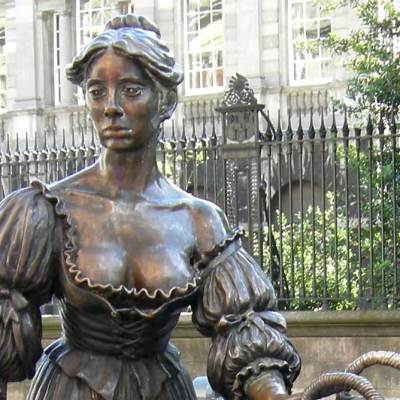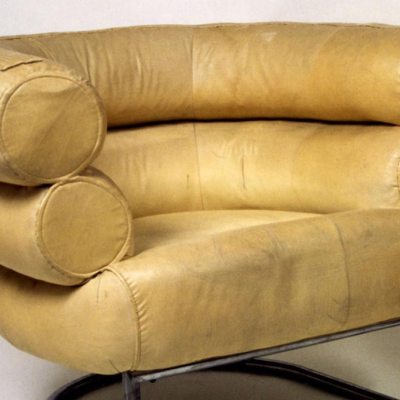The standard narrative about Damien Hirst runs thus: a brilliant artist who personified the ‘Cool Britannia’ of the 1990s, he ‘sold out’ and became a producer of vulgar and vault-crackingly expensive works, a post-millennial fusion of Warhol and Vinnie Jones. Whatever the value of this, it can’t be doing him much harm – Hirst may well be flogging a dead horse (without even bothering to dissect it and plop it into formaldehyde), but he has both our attention and, presumably, a lustrous bank balance to show for it. For all the carping it inspires, Brand Damien continues to lunge quixotically from venture to venture; from making novelty football records to running restaurants, he’s been there, done that and bought, signed and upsold the T-shirt.
And so it is that having broken auction records, become a veritable engine for ‘OUTRAGE!’ headlines and done unprintable things to his penis with cigarettes, Damien Hirst is now coming for your children. ABC, his latest assault on the world of retail, is a glossy card alphabet book illustrated with his work. It’s shiny and it smells nice (it’s printed with ‘child-friendly soya bean ink’, apparently) and it has slightly – but not many – more than 26 letters in it. Hirst’s alphabet explains that ‘A is for Anatomy’, and ‘J is for Jaws’, and G, surprisingly, ‘is for Gold’. He couldn’t resist getting himself into shot, either: ‘N is for Nurse’ has him mugging for the camera in scrubs, staring out like a mildly surprised panda.
And that – retailing at a competitive £15.99 – is that. How to judge it, then? The blurb makes the perfunctory claim that it is ‘fun for all the family’ though to which family it refers remains somewhat ambiguous. There is nothing new or remarkable about the photographs of familiar spots, monolithic anatomy sets and spin paintings, and with entries such as ‘Q is for Quackers’ (that is, ducks) ABC isn’t even much of a learning aid. On the face of it, it is what it is – a last-minute gallery bookshop purchase for first-time godparents who’ve just remembered Christmas is approaching.
Enjoyable though it is to bait Hirst, there is a serious counter-argument to be made: however cynical and culturally pointless ABC might seem – which, as we’ve established here, is very cynical and culturally pointless indeed – Hirst is and has always been an artist unafraid to deal very directly with the big stuff. The ambiguous, sloganeeringly simple language he deploys (was there ever a more hilarious title for a monograph than I Want to Spend the Rest of my Life Everywhere, with Everyone, One-to-One, Always, Forever, Now?) and the automatically iconic imagery of much of his canon cannot fail to provoke a reaction in even the least engaged of viewers.
To return to the assertion of the first sentence, Hirst was and, in many respects, remains a brilliant artist, whose genius lies in being able to articulate listless and irrational fears into an effortless visual shorthand; it’s precisely the kind of art that raises the curiosity of small children. It falls to personal recollection to qualify this: I first became aware of Damien Hirst when watching the childrens’ BBC programme Blue Peter aged five. A warning of ‘distressing images’ (always an incentive to keep watching) flashed up and the artist’s Mother and Child Divided banged onto the screen: ‘is this art?’, asked the presenter. I didn’t have a clue, but terrified as I was, it made me desperate to find out. To say it made an impression would be something of an understatement, and if personal experience is anything to go by, ABC might conceivably have a value beyond its price tag.





